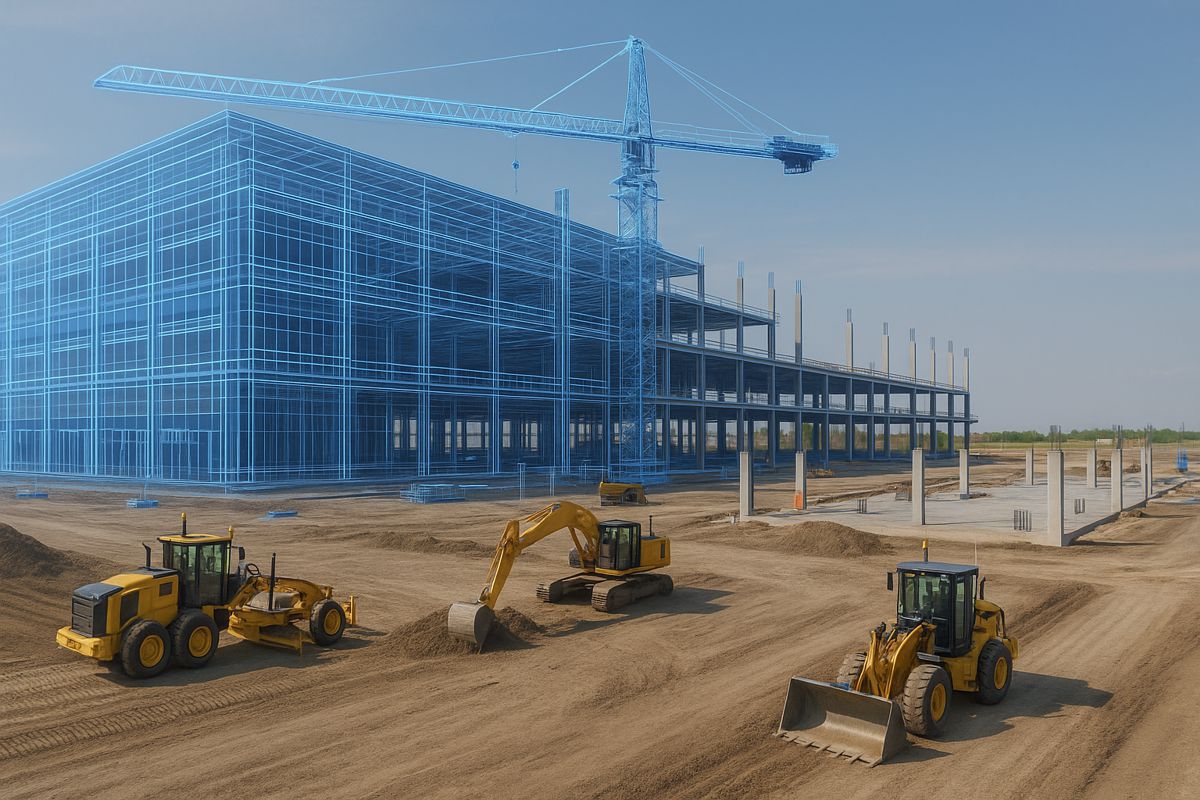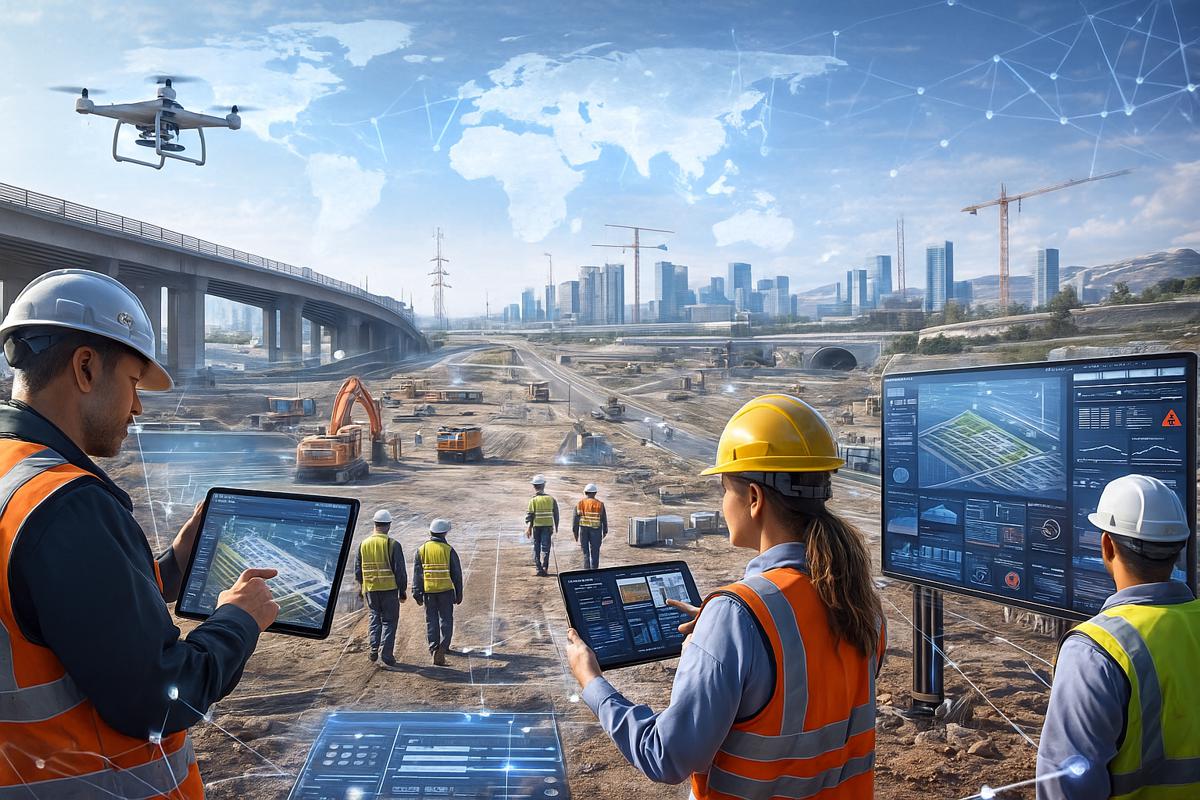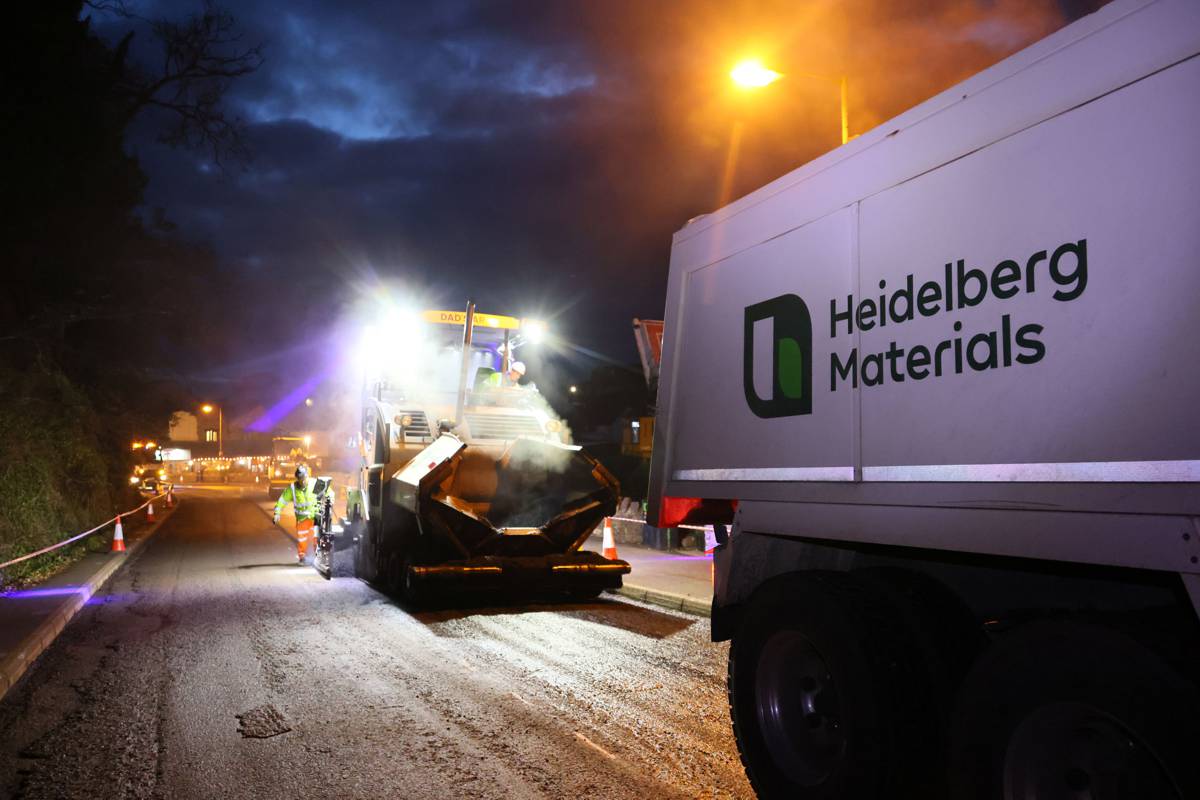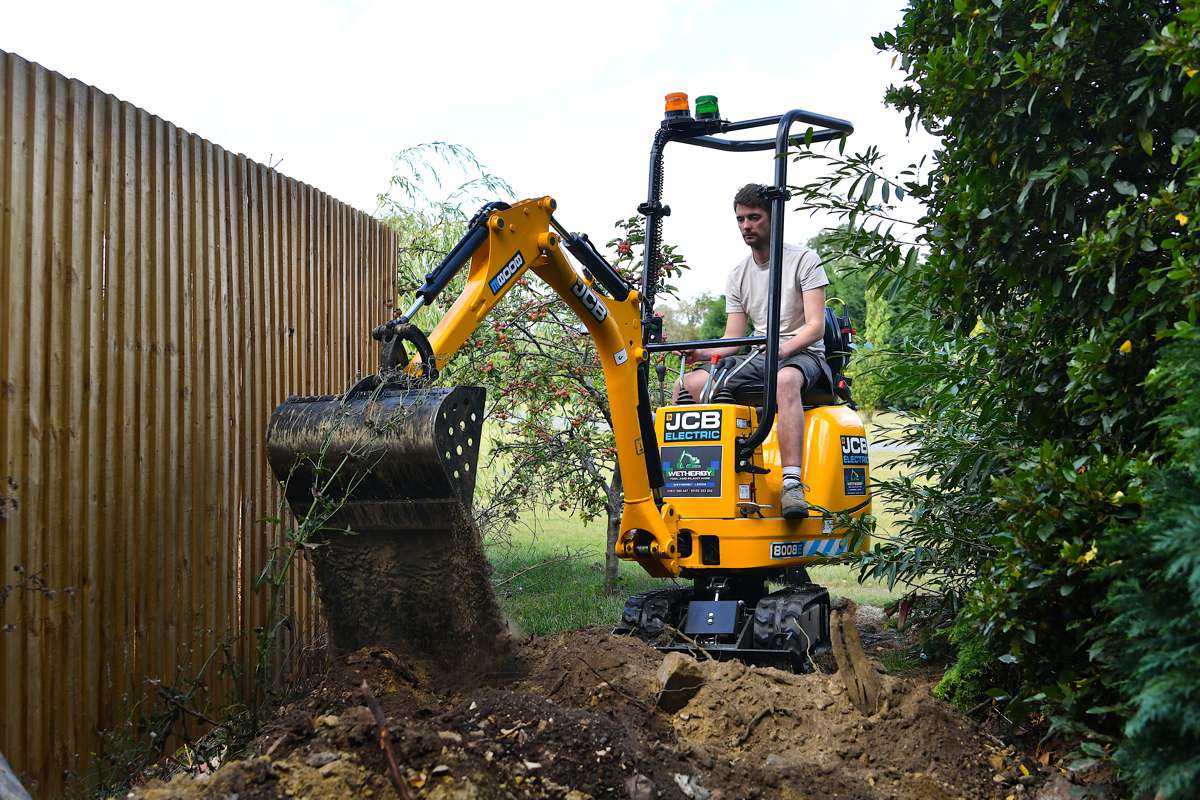Building the Future with Trimble’s 2026 Industry Outlook
In the ever-evolving world of construction, few sectors are growing as rapidly, or as relentlessly, as data centres. With the rise of AI, cloud computing, and connected technologies, global demand for digital infrastructure has soared.
Data centre projects now outpace most traditional builds, demanding unprecedented speed, precision, and collaboration. As Duane Gleason, Industry Workflow Principal at Trimble, explained: “By embracing and integrating technology solutions like 3D laser scanning and 3D modelling, builders can maintain control, mitigate risk, and meet the relentless pace of data centre development head-on.”
These advanced workflows are transforming how contractors design, plan, and execute complex facilities. With common data environments (CDEs) ensuring every stakeholder works from a single, updated source of truth, project teams can coordinate seamlessly across disciplines. The ability to visualise, simulate, and detect clashes before breaking ground minimises costly errors, reduces delays, and boosts confidence across the board.
The rise of agentic AI systems in construction
Artificial intelligence is no longer confined to experimentation. In 2026, AI will be embedded into the very fabric of construction workflows. According to Aviad Almagor, Vice President of Technology Innovation at Trimble: “We’ll see a significant rise in the adoption of agentic AI systems, systems that can utilise GenAI and automate end-to-end processes.”
These intelligent systems will observe, reason, plan, and optimise in real time, essentially learning as they go. From automating design iterations to managing site logistics, AI networks will operate as interconnected agents across design, engineering, and construction. This evolution hinges on data interoperability, enabling AI to share and refine information across digital ecosystems.
Beyond improving workflows, this AI revolution will help tackle one of construction’s biggest pain points: labour shortages. By automating repetitive processes, professionals can focus on creative problem-solving and strategy, while AI agents handle scheduling, material tracking, and safety monitoring. In effect, human intelligence and artificial intelligence are beginning to work in true partnership.
Attracting tomorrow’s workforce
With almost half a million new workers needed in 2026 just to meet global construction demand, workforce development has become a strategic imperative. Ian Warner, Director of Industry Workforce Development & Innovations at Trimble, noted: “Contractors that invest and deploy the latest technology will have a competitive advantage, by optimising employee productivity and being able to do more with less.”
As a generation of seasoned workers retires, the industry must evolve to appeal to younger talent who expect digital tools and data-driven processes. Training programmes that blend practical experience with digital fluency, using VR simulations, robotics, and real-time project visualisation, are proving essential to closing the skills gap. The next generation wants to build smarter, not just harder, and forward-thinking firms are answering that call.
Subscription-based models transforming construction technology
The construction sector is also seeing a major shift in how technology is delivered. Subscription-based hardware and software models are maturing rapidly, offering contractors scalable solutions without hefty upfront investments. Toni Piwonka, Associate Vice President of Strategic Transformation at Trimble, explained: “These subscription services will offer increased flexibility and scalability, allowing contractors to customise offerings to their specific needs.”
This model strengthens collaboration between providers and users, as technology partners move from selling tools to providing continuous service and optimisation. Enhanced cloud platforms ensure automatic updates, stronger cybersecurity, and reduced downtime. For smaller firms, subscription models democratise access to cutting-edge tools, creating a level playing field in an industry that has traditionally favoured large players.
Democratizing reality capture technology
Reality capture is rapidly evolving from a specialised technology to a standard part of construction workflows. Arnaud Lezennec, Senior Applications Engineer at Trimble, highlighted: “New user-friendly tools will enable even more comprehensive data collection and in-field treatment for faster and improved decision making.”
With mobile phones, drones, and 3D scanners now capable of generating high-precision data, reality capture enables teams to visualise progress, detect errors, and coordinate changes almost instantly. AI and machine learning further enhance this capability, turning raw imagery into actionable intelligence. As cloud-based sharing becomes seamless, contractors, engineers, and owners can all see the same visual record, aligning efforts and reducing misunderstandings.
Automation and autonomous construction on the horizon
The shift toward automation is gathering pace, but it’s more evolution than revolution. Ian Welch, Director of Engineering for Civil Construction Field Systems at Trimble, explained: “We expect to see continued advancements in what will be the foundation to a future in which tasks and machines are more automated.”
Autonomous equipment is becoming smarter through AI-driven controls, while improved interoperability between machine types and platforms is making integration easier. Vast datasets from connected sites are teaching these systems how to navigate real-world complexities, making them more efficient and safer. Third-party developers are also accelerating progress with new automation tools for specific tasks, especially around site safety, precision grading, and productivity analytics.
Common data environments powering connected construction
Chris Peppler, Vice President of Platform and Product at Trimble, captured it succinctly: “Every construction company today is a data company.” That reality is fuelling the rapid adoption of CDEs. By centralising information from every project phase, design to maintenance, these platforms eliminate data silos and wasted effort.
CDEs serve as the backbone of digital construction, driving collaboration, transparency, and accountability. They enable teams to access live updates, coordinate changes, and build digital twins that mirror physical assets in real time. The result is faster decision-making, improved communication, and a smoother path from design to delivery.
Accelerating data integration and interoperability
Interoperability remains the holy grail of construction technology. Modern projects rely on diverse software, tools, and data sources that rarely speak the same language. According to Peppler: “Technology vendors, including Trimble, are expected to accelerate efforts to enhance interoperability, delivering greater value to contractors.”
This progress is especially crucial for mixed equipment fleets. With better data sharing between systems, contractors can coordinate machines, measure productivity, and analyse costs across brands. Interoperability ensures that information flows freely, reducing duplication, manual input, and miscommunication, making construction faster, safer, and more efficient.
Smarter asset management through GIS-centric workflows
Managing vast, ageing infrastructure is becoming one of the construction industry’s toughest challenges. Chris Bell, Vice President of AECO Industry Strategy & Product Marketing at Trimble, pointed out: “Innovations in 3D GIS and modelling technology are creating richer, more precise models of public assets.”
GIS-centric asset lifecycle management (ALM) is reshaping how municipalities and private owners maintain assets. By merging AI, real-time spatial data, and predictive analytics, owners can monitor performance, forecast maintenance, and reduce costs, often by as much as 40%. More importantly, these systems promote proactive maintenance rather than reactive fixes, saving taxpayer money and extending the lifespan of infrastructure.
This digital stewardship creates not only operational efficiency but also sustainability and resilience, crucial as climate impacts intensify and public budgets tighten.
Expanding access to advanced technology for smaller contractors
Historically, innovation has trickled down slowly to smaller contractors. But that’s changing fast. Doug Seyler, Vice President of Implementation and Customer Success at Trimble, observed: “Barriers to entry are falling, and adoption by small and mid-size contractors will accelerate.”
Through subscription models and simpler cloud integrations, small firms can now access the same high-end technology as industry giants. E-commerce models and tiered solutions make it easier to start small and scale up. Meanwhile, Trimble’s expanding dealer network, representing major brands like John Deere, Komatsu, and BOMAG, means technology, installation, and support are now just a call away. Ron Bisio, Senior Vice President at Trimble Field Systems, added: “This accessibility will also fuel a new level of data integration and interoperability between different equipment brands in 2026 and beyond.”
Visualisation and BIM
Digital collaboration is becoming the norm, and 3D models are leading the charge. Sandra Winstead, Senior Director of Product for Architecture & Design at Trimble, said: “Design conversations will take place directly within 3D models, enabling quicker iterations, faster workflows and stronger alignment throughout design and construction.”
By embedding collaboration tools within models, teams can discuss changes, resolve issues, and make decisions in real time. This shift reduces rework, saves time, and ensures every stakeholder, from designers to operators, has a clear understanding of the project’s evolution. With CDEs linking these models across the project lifecycle, data handovers are seamless and rich in context, supporting long-term asset management.
Building smarter business foundations
Construction’s financial management is also undergoing a digital transformation. Jon Fingland, Vice President & Category Manager of Finance, HR, Project & Operations Management at Trimble, explained: “Comprehensive ERP systems enable contractors to better manage job costing, budgets, cash flow, and personnel, while enhancing overall profitability.”
Integrated financial systems now link directly to project management, procurement, and HR functions, giving leaders full visibility into every pound spent. By streamlining data flow between departments, contractors can prevent costly overruns, anticipate risks, and make data-backed decisions faster. As tariffs and material prices fluctuate, this integrated approach offers the agility needed to stay competitive and profitable.
Building resilience and digital confidence
As 2026 approaches, one message is clear: construction is entering a new era of intelligence. From AI-driven design and autonomous equipment to data-rich collaboration and predictive asset management, technology is transforming how infrastructure is built and maintained.
The industry’s future belongs to those willing to embrace data, automation, and training as strategic assets. With digital tools becoming more accessible, even the smallest contractors can now compete on innovation. Together, these advancements are not only reshaping the built environment but also redefining what’s possible for the people who build it.




















